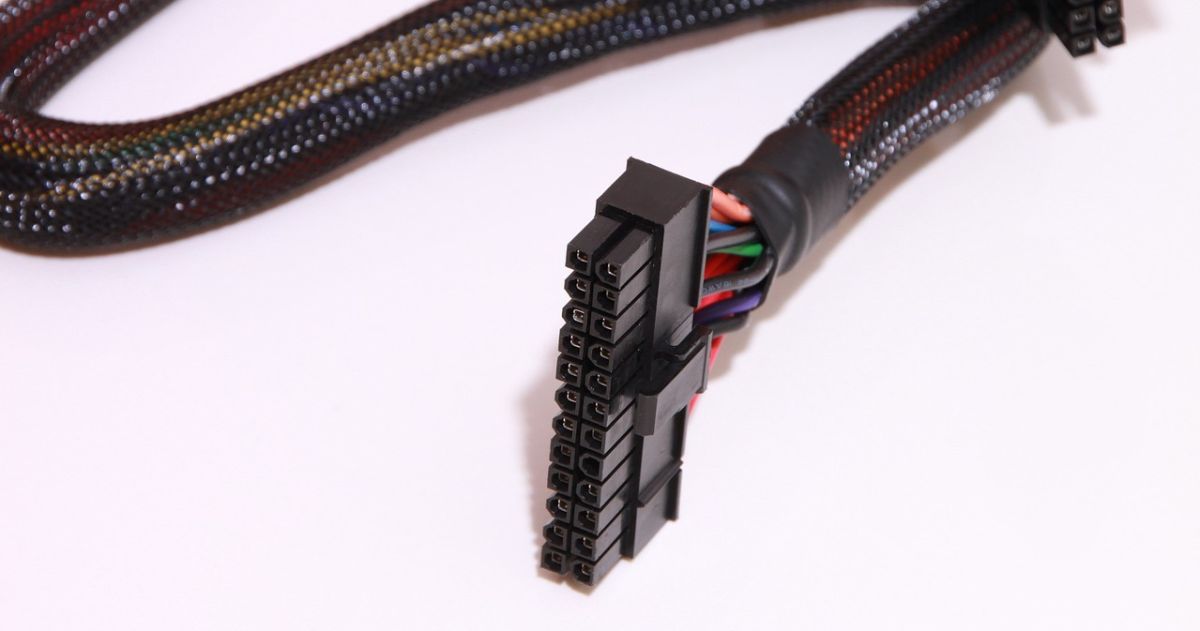
Looking inside your PC will make you find more than one cable. Likewise, you will have heard the term 'ATX-cable'. But do you know what its function is? In this article we are going to try to shed some more light and discuss some components that you can find inside your desktop computer.
The components Internals of a motherboard must be powered by the tower's power supply. However, not all of them use the same voltage. Hence more than one cable is needed. Now, if we talk about ATX cable, this is one of the most important cables in the entire setup. And below we explain why.
What is ATX cable
If you have ever opened a desktop PC tower, surely you have identified the motherboard - where all the components are connected and we have the expansion slots - and it must receive electricity from the power supply of the set to work with a cable . Well, this cable is known as 'ATX-cable'.
This cable has several pins and on older models it was 20-pin, while on newer setups it's usually a 24-pin cable. Now, if you do a search on the Internet, you will surely find this cable called ATX 24 cable or ATX 20+4 cable. And it is that modern plates need extra electricity. Therefore, depending on the ATX cable model we choose, it can already have the 24-pin connector in the same connector or a main 20-pin cable plus a small extra 4-pin cable.
What powers the ATX cable?
In general, almost all the components connected to the motherboard are powered by this ATX cable. Therefore, both RAM memory, the different USB ports of which the configuration of our tower counts, the PCI-e slots, etc.. Although it is also true that, as the years have gone by, the components require a somewhat higher voltage. But usually the motherboard receives its power from the source through this cable.
However, recently Intel -the one in charge of launching this standard-, has introduced a new model that delivers a single voltage: 12V. This cable is called cable ATX 12VO which refers to 'ATX 12 Volt Only'.
What is the new ATX 12VO standard?
This cable, according to Intel, it will cost less energy. In addition, the current 24 pins would become only 10. And this will mean that motherboards must have voltage transformers to adapt those unique 12V to smaller voltages for the components that need it.
While in the current ATX standard we had rails that offered 3,3V and 5,5V voltages -in addition to 12V rails-, these first ones have been eliminated and only three 12V rails are offered which, later, in the current motherboards will be converted to the voltage that each element needs.
Now, the new standard that Intel wants to impose on the market is gradually reaching companies. And therefore it is more difficult to get a compatible motherboard. And if you find it, its price -surely- is higher than usual.
However, it is true that the power supplies will be less expensive and simpler as they will not have to be in charge of converting the voltage necessary for some components, in case they need it.
Cons with this new ATX12VO cable
Perhaps, right now what is coming to your head is what happens in case of failure. Well clearly now instead of having to change the power supply (PSU), we should change the motherboard. That is, if we talk about current prices, the repair will not be cheap.
Now, if you take a look at the motherboard market, the vast majority that you will find will continue to use the 24-pin ATX cable that has been used for years in all computers. What is your opinion of this new standard that Intel wants to implement?
